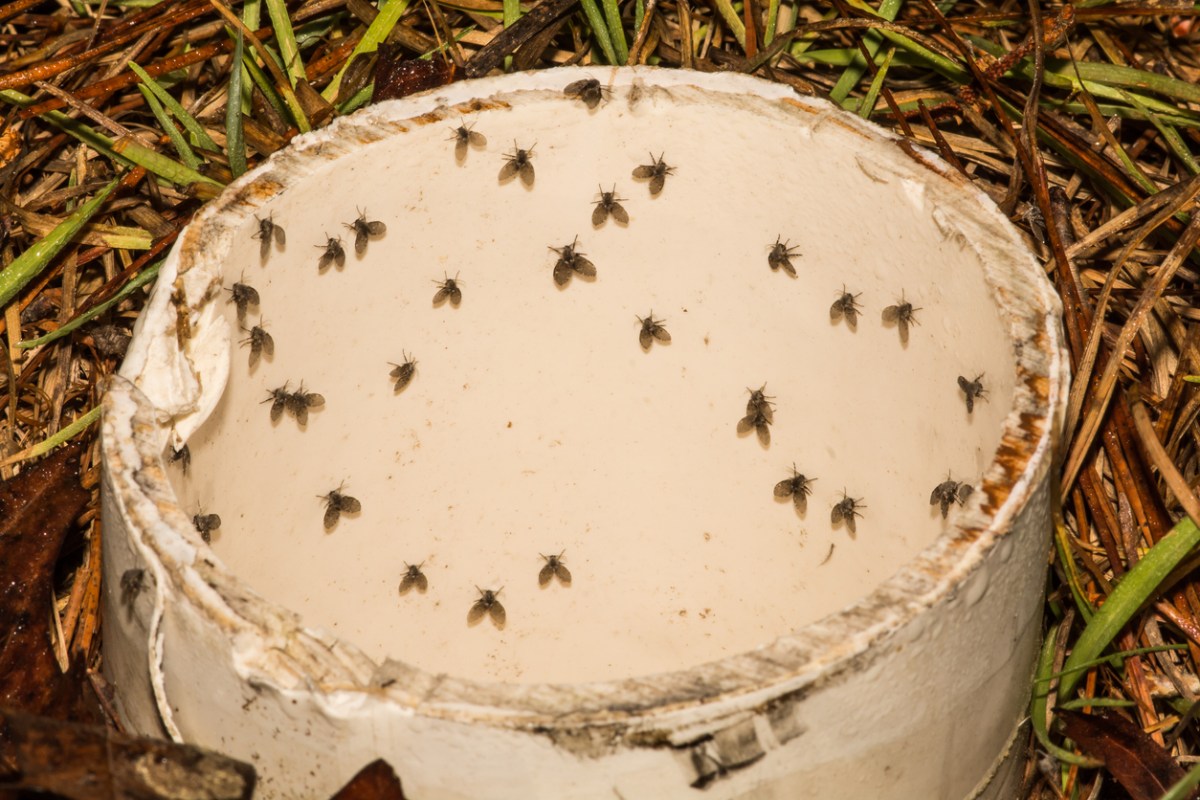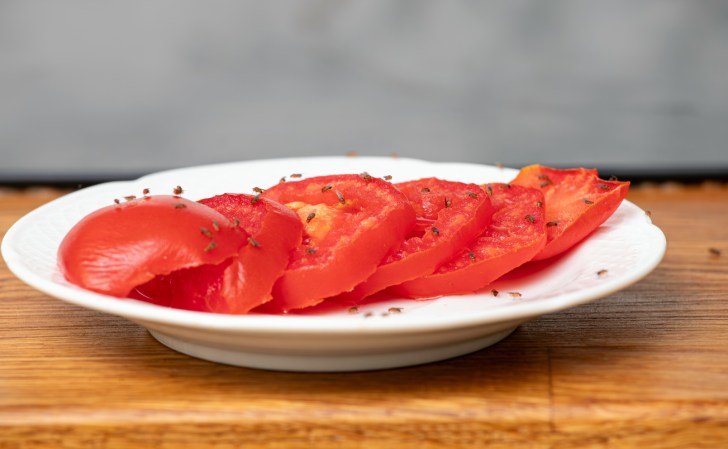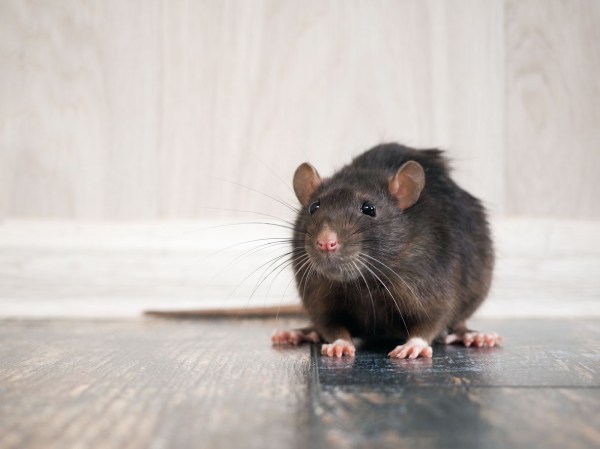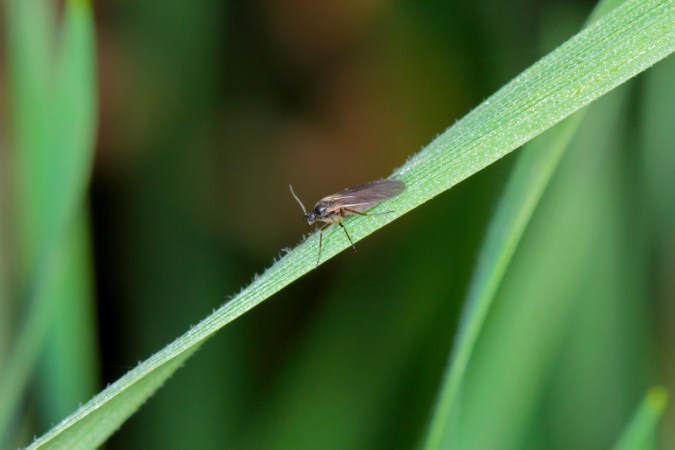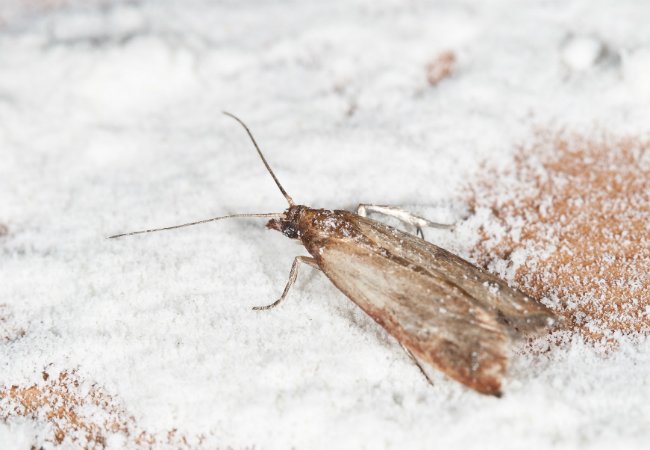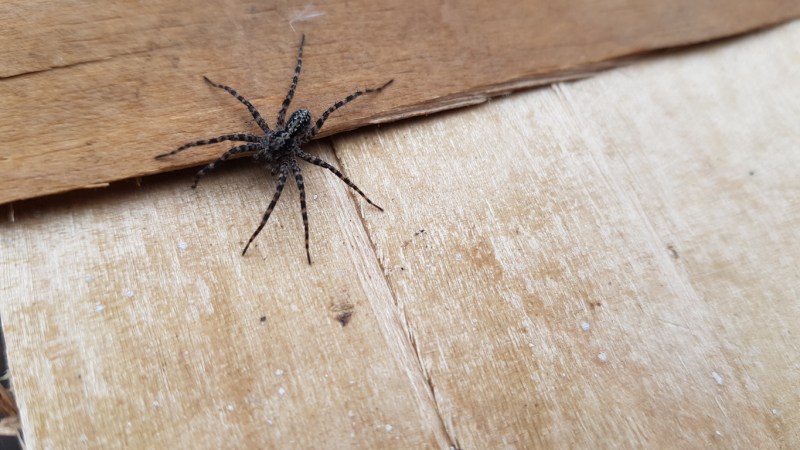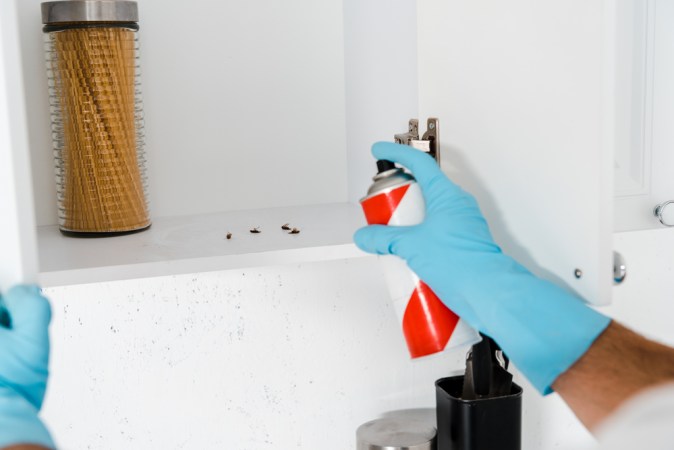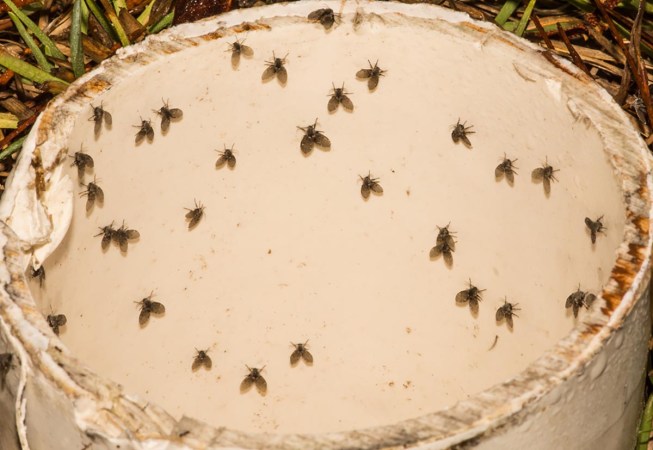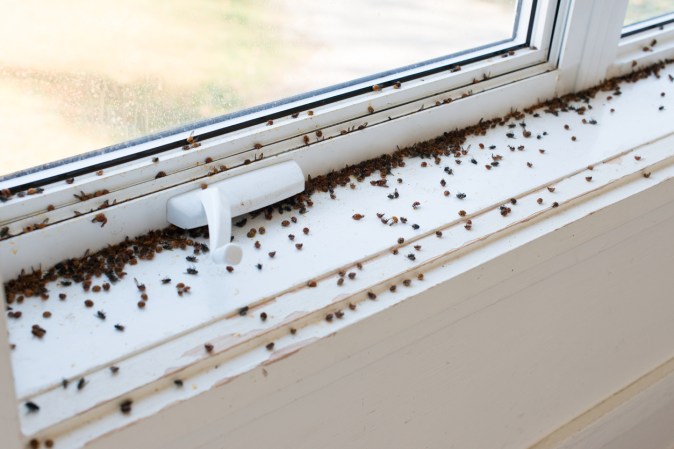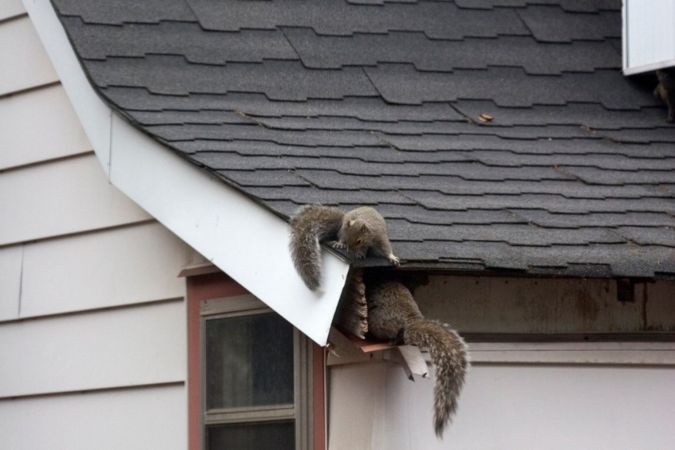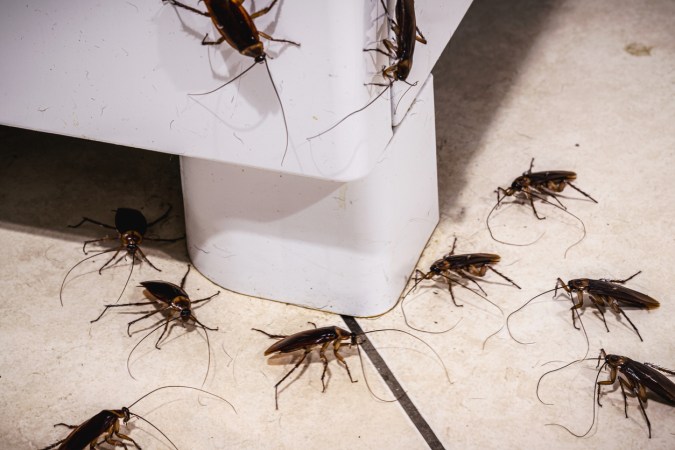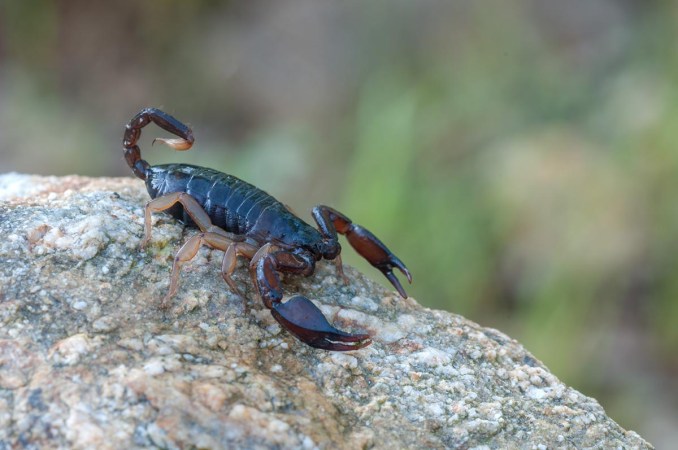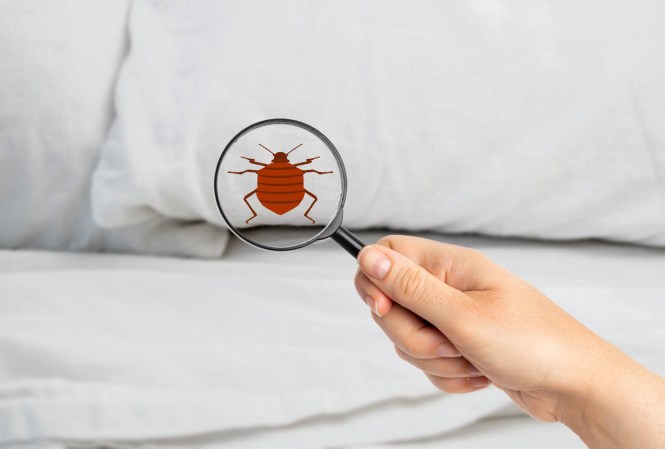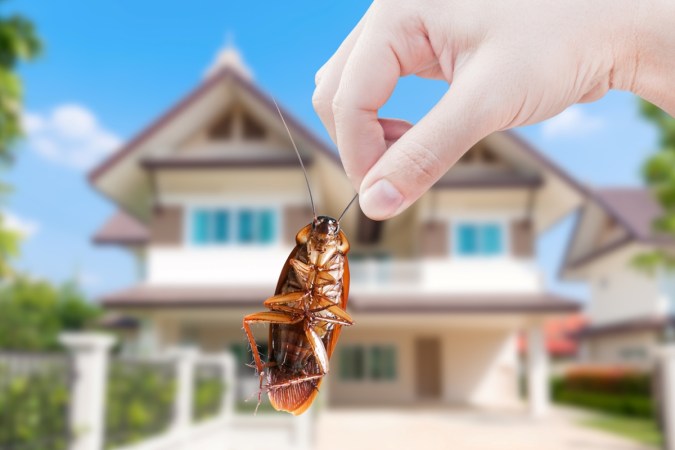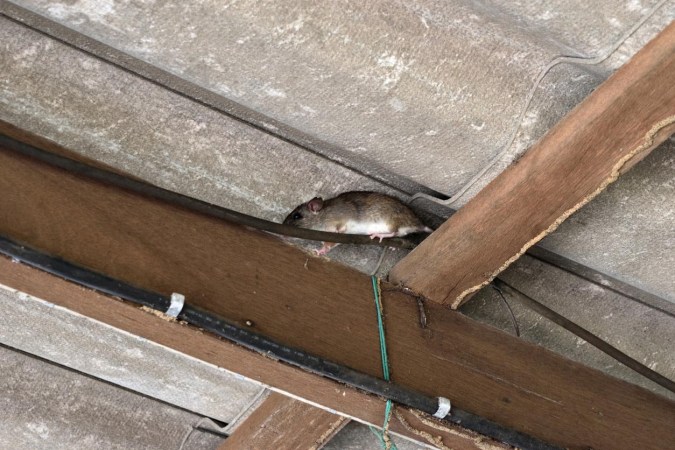We may earn revenue from the products available on this page and participate in affiliate programs. Learn More ›
Drain flies, also known as moth flies, are a common nuisance in many homes. These pests live and breed inside your plumbing pipes, feeding on decomposing material and laying eggs within the gelatinous slime that collects along the walls of your drain. According to Rich Mullins, an Indiana-based plumber with over 25 years of plumbing experience and founder of H20 Plumbing, “a clogged or slow-moving drain creates a perfect breeding ground for these pests and identifying an infestation can be tricky.” While these insects don’t bite or spread disease, no one likes to see tiny winged bugs flying out of otherwise clean sinks. If you see drain flies in your bathroom, follow these steps to identify the source of drain flies and the best drain fly killers to eliminate them.
What are drain flies?
Drain flies (Psychodidae) are tiny insects commonly found in, you guessed it, drains. They can also be found in damp areas and in standing water, including in unused toilets and sewage systems. These moth-like pests are small, measuring roughly ⅛ inch long, and feature a brown, black, or gray exoskeleton covered in fuzzy hairs. They thrive in moist environments and often lay their eggs in the debris that builds up inside drains. Drain fly larvae, known as maggots, can also develop in water. The larvae are often overlooked, however, because they are so small.
The life cycle of a drain fly can last anywhere from 8 to 24 days, dependiung on the temperature of the drain and the surrounding climate. If you’re wondering whether drain flies bite, rest assured that these pesky flies aren’t dangerous to humans, although they can become a nuisance once they invade a home or commercial space.
RELATED: How to Get Rid of Flies in the House
“I advise using a simple test: place a piece of tape over the drain at night. If you find flies stuck to the tape in the morning, it’s a clear sign of an infestation.”
—Rich Mullins, founder of Indiana-based H20 Plumbing
Drain flies vs. fruit flies: What’s the difference?
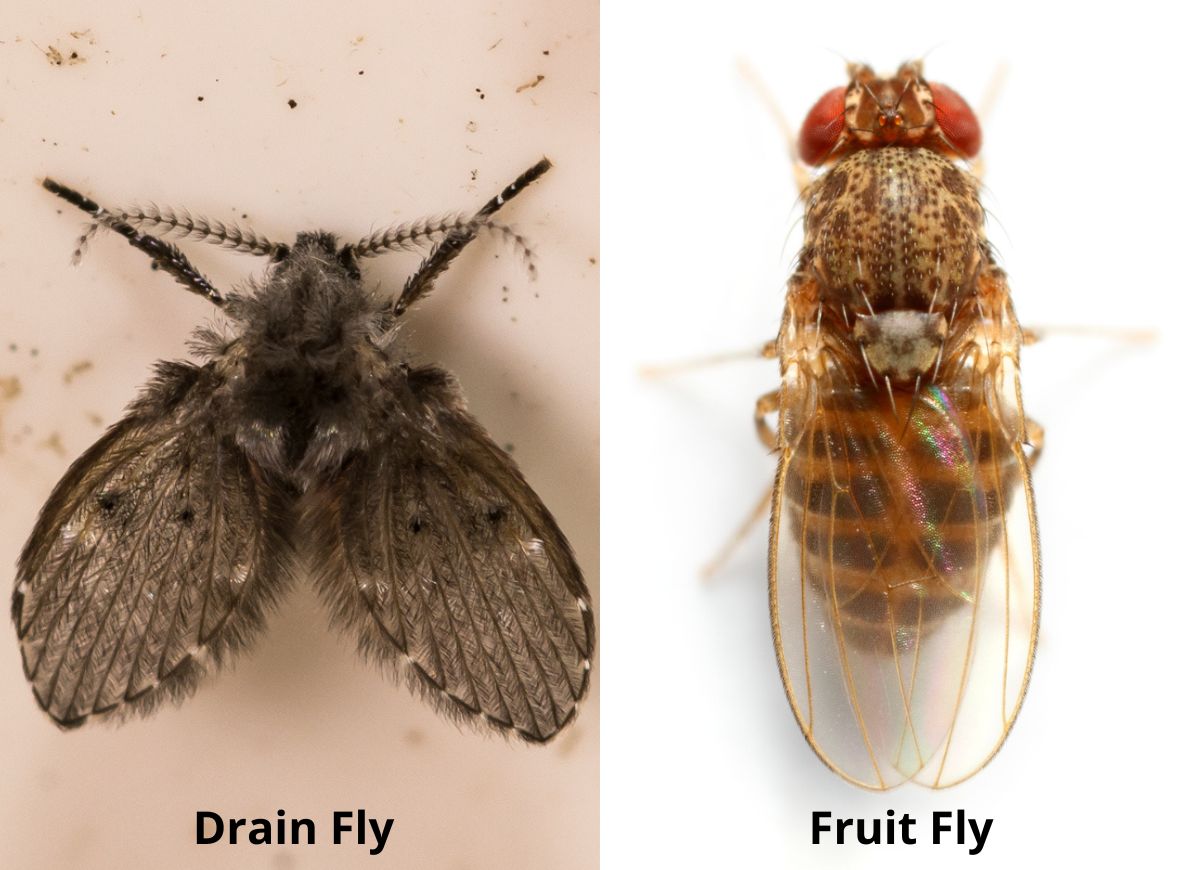
Drain flies and fruit flies are often mistaken for each other, as they’re both small in size and similar in appearance. They do, however, have distinct differences.
Similarities:
- They both have small bodies.
- Both breed around standing water and in drains and garbage disposals.
Differences:
- Drain flies thrive in moist environments like drains and sewage systems; fruit flies are attracted to ripe fruits and vegetables.
- Drain flies primarily feed on debris and sludge-like substances; fruit flies are attracted to fruit and sugar.
- Drain flies have a fuzzy, moth-like appearance; fruit flies have a rounded, slender silhouette with clear wings.
RELATED: How to Get Rid of Fruit Flies: 5 DIY Traps
Tools & Materials
Bobvila.com may earn a commission from purchases made through these links.
Project Overview
Working Time: 20 minutes
Total Time: 20 minutes
Skill Level: Beginner
Estimated Cost: $15 to $30, depending on supplies already on hand
Before You Begin
While bleach will kill drain flies, it can also damage household drains and septic systems. The chlorine in bleach can even corrode the metal components in water tanks and potentially lead to contamination of the water supply. Skip the bleach and instead read on for safer methods of killing drain flies.
How to Get Rid of Drain Flies
Step 1: Identify the affected drains.
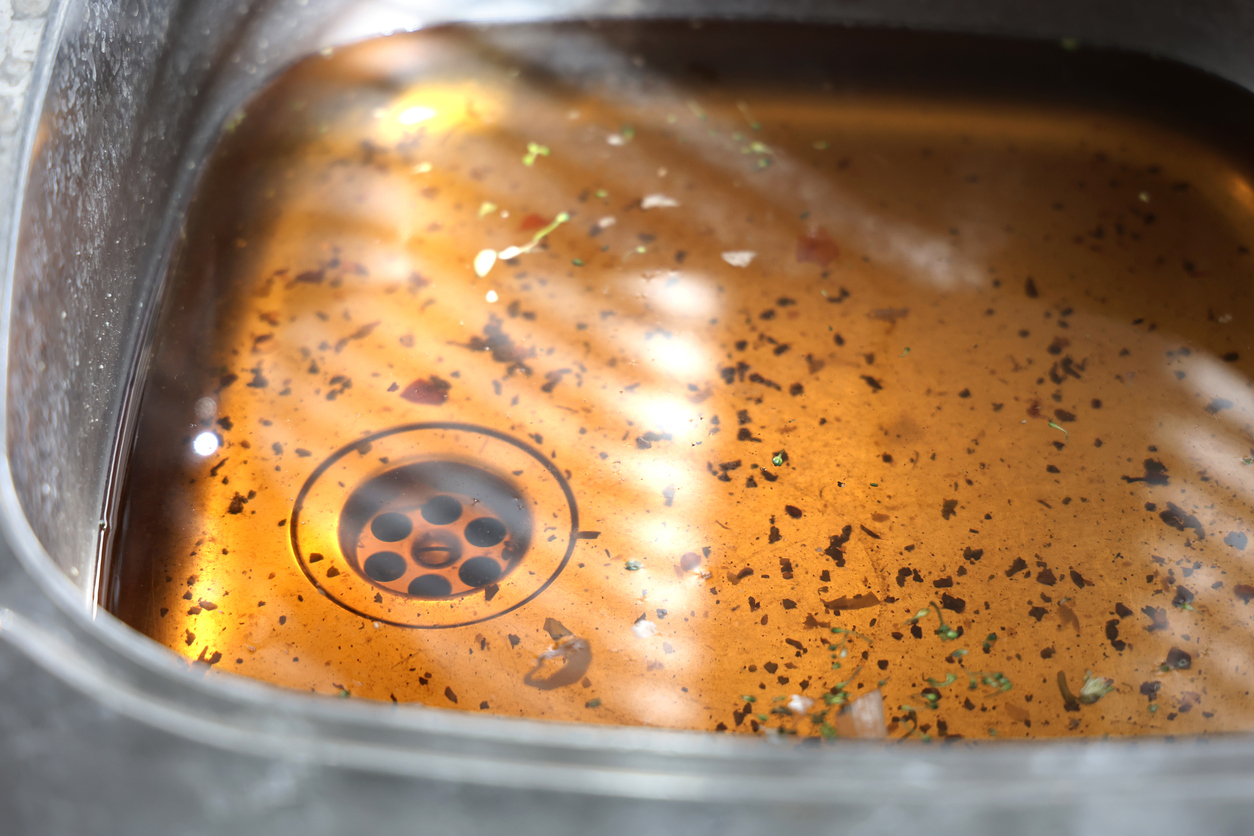
Before you can rid your home of drain flies, you need to identify the affected drains. Adult drain flies love to feed and breed in slow-moving or clogged drains, because they provide plenty of decomposing material where the insects can complete their life cycle. If any of your drains are backed up, chances are that those are the root of the problem.
To identify a drain fly infestation, Mullins says it can be tricky but super important to find. “Homeowners might notice these small, flying insects near drains, especially during the evening or at night,” Mullins says. “To confirm the issue, I advise using a simple test: place a piece of tape over the drain at night. If you find flies stuck to the tape in the morning, it’s a clear sign of an infestation.”
You don’t want to block airflow in the drain, so just make an “X” in the tape over each drain opening.
- Put the tape on the drains before you go to bed and leave it there overnight to catch any insects that may try to fly out. (Drain flies are most active at night.)
- Check the tape the next morning for signs of bugs to determine which drains are the source of your fly problem.
Step 2: Use warm water and a drain snake to clean the affected drains.
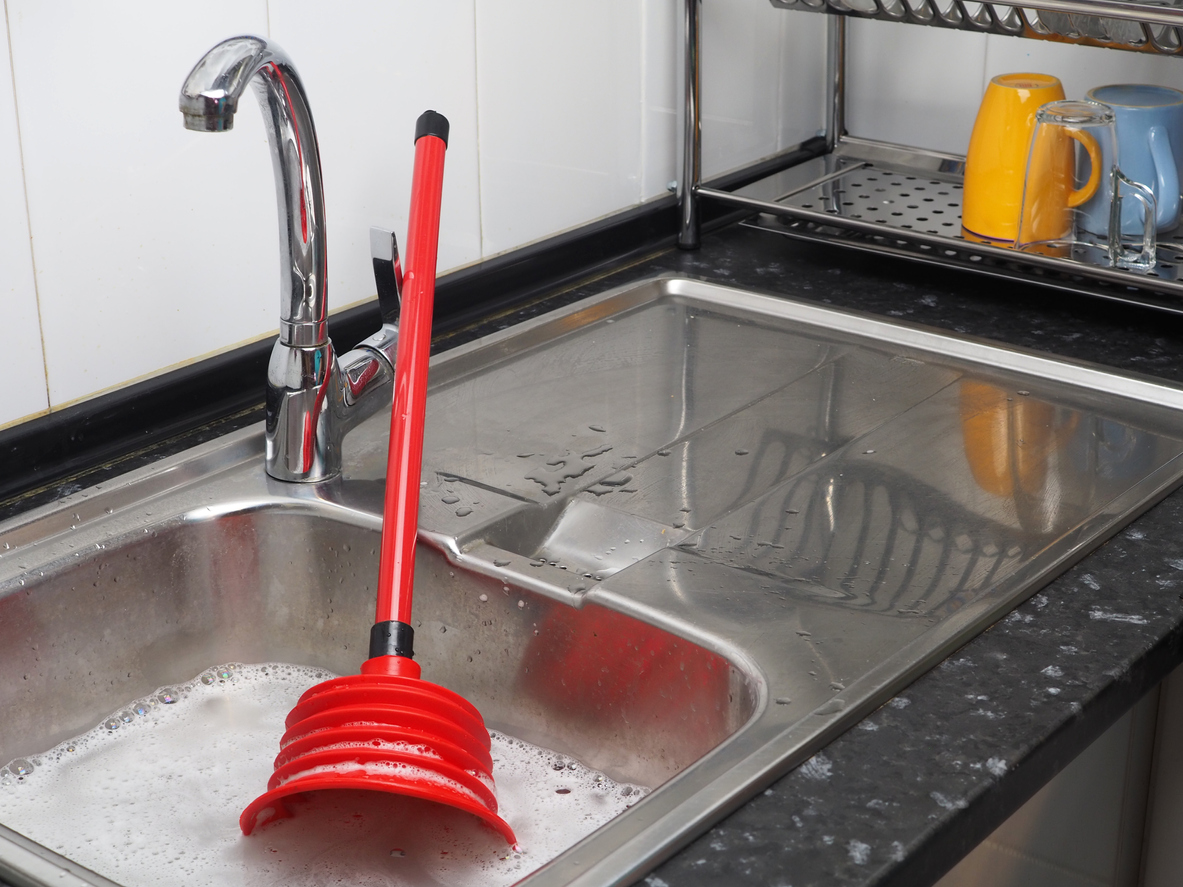
Once you’ve identified the problem drains, you need to eliminate the flies’ breeding zones by cleaning the slimy gunk out of them. Resist the urge to pour a bottle of chemical drain cleaner down the drain. Doing this won’t effectively eliminate all of the decomposing material in your pipes and traps, and it’s not good for the environment or your pipes.
Instead, start by running warm water down the drain. Next, insert a drain snake or pipe brush and use a gentle up and down motion to remove the built-up slime covering the inside of the drain pipe. A plunger can also be used to help pull out any leftover material from the pipes. Mullins also recommends another solution that can help rid your drain of flies. “Remove any hair, debris, or gunk that might serve as a breeding ground,” Mullins states. “Pouring a mixture of vinegar and baking soda down the drain can help break down organic matter and eliminate breeding sites.”
Step 3: Clear the U-trap.

The U-trap under your sink (also called the P-trap) blocks toxic, foul-smelling sewer gases from traveling through the pipe into your home. You’ll need to open it up to remove any clog-causing remnants that have collected inside. To do this, first place a large bowl under the drain to catch any spilled water. Use a cloth to loosen one side of the U-trap, and then loosen the other side. Remove the trap, pour out any water into the bowl, clean the pipe, and replace the trap.
Step 4: Use an enzyme drain cleaner to clear the drain of remaining residue.
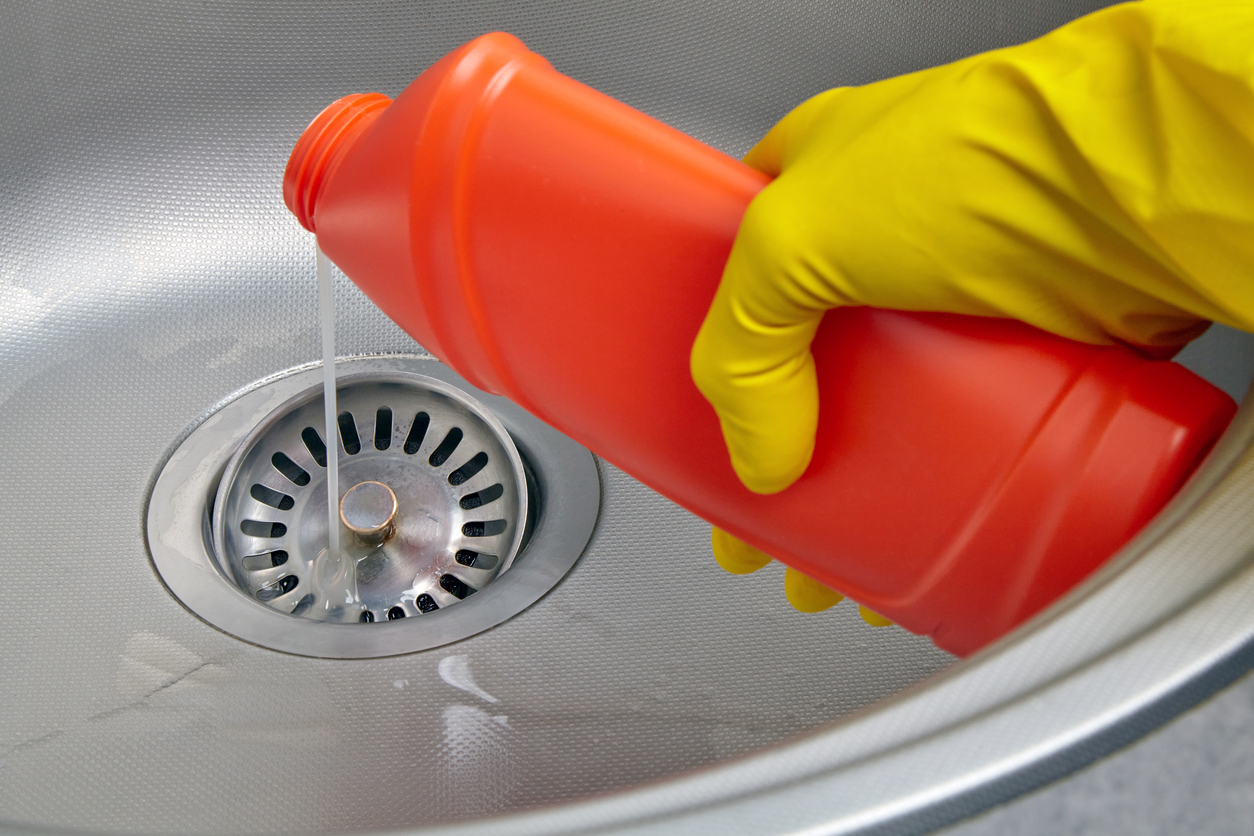
Once you have the U-trap reconnected, pour an enzyme drain cleaner down the drain to attack any residue that didn’t come off with the pipe snake or brush. Green Gobbler’s enzyme cleaner has the added benefit of coating the walls of the pipe to prevent future blockages. Let the gel sit for the amount of time specified on the label, and then run more water down the drain to flush it out.
With their breeding ground wiped out, the adult flies will have nowhere left to deposit their eggs and should eventually disappear.
If drain flies are still a problem in your home after a week, assume that you didn’t adequately treat all the problem areas. Go back to Step 1 to determine which drains still have problems, and repeat the steps above to clear out the infested drains.
RELATED: Buyer’s Guide: The Best Drain Cleaning Services
How to Prevent Drain Flies From Returning
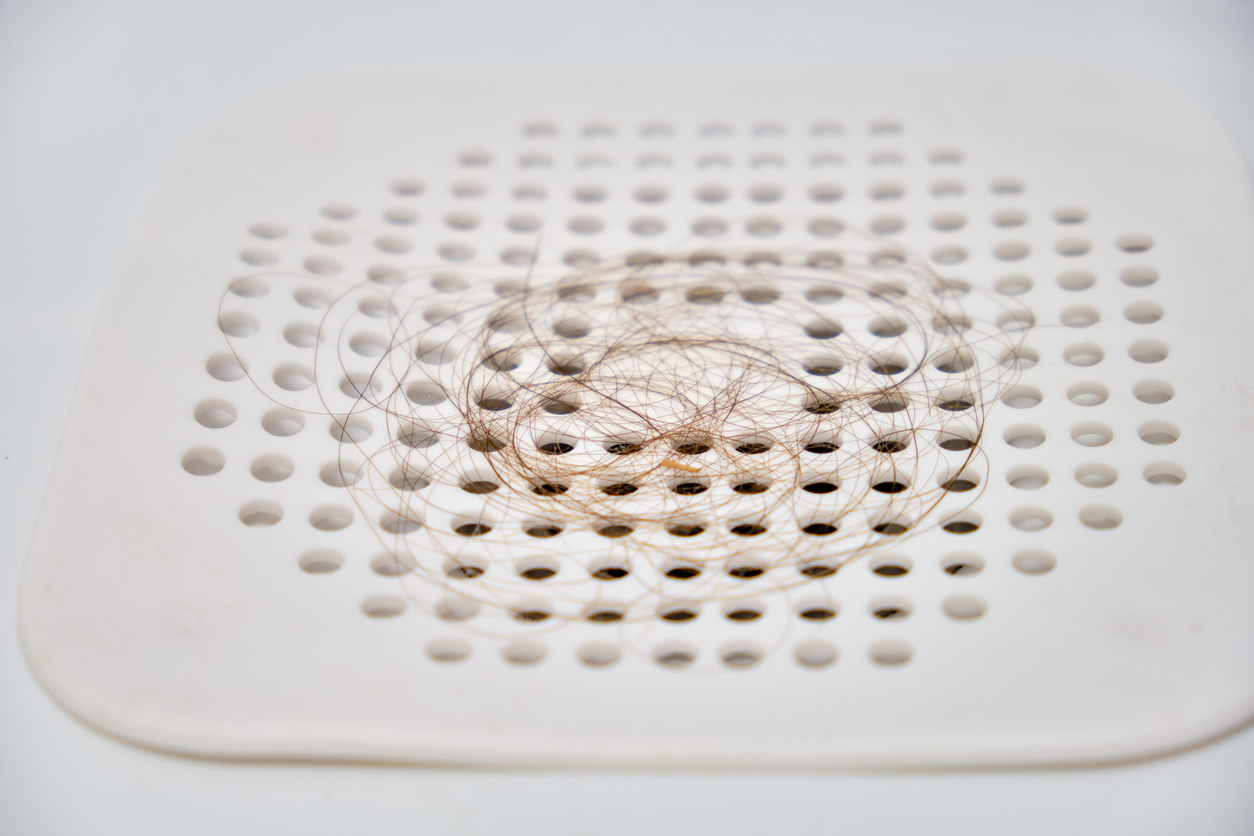
If you follow the above steps, you should be able to rid your home of drain flies. To prevent the pesky critters from coming back, regularly clean your sinks, drains, and disposal and remove the built-up matter that attracts the flies. Also, fix any leaks as soon as you notice them, because sitting water also attracts to drain flies. Finally, use sink strainers and hair catchers to stop debris from entering the pipes and create potential breeding grounds.
Final Thoughts
Ridding your home of drain flies is entirely achievable with the right methods. Just remember that patience is key and banishing drain flies completely may take time. To speed up the process, keep drains clean and dry, fix any plumbing leaks promptly, and use drain covers to prevent future infestations. By following the steps above, you can create a drain-fly-free space and keep these pests from popping up in your home.
